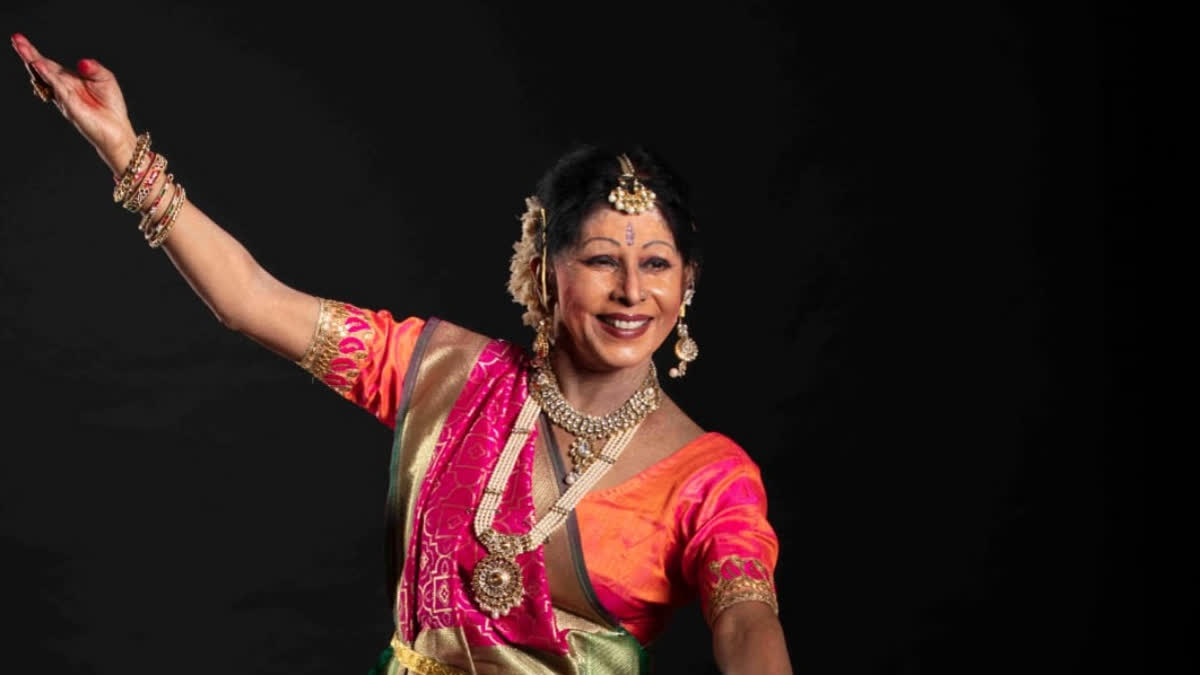Celebrated Kathak exponent Shovana Narayan was four years old when she first performed on stage. Frightened as any child would be, the now Padma Shri recipient didn't know one day, she would become synonymous with Kathak in India. The disciple of Pandit Birju Maharaj, Shovana turned 75 this year. She has beautifully blended traditional Kathak with contemporary themes drawing inspiration from literature, history, and social issues, making them relevant for the younger generation and admirable for a global audience.
With a career spanning over six decades, Shovana was recently felicitated in Delhi by her disciples around the globe. Earlier this week, Shovana performed at the 23rd edition of the Lalit Arpan Festival 'Stree Spandan: Why I Did What I Did' in Delhi. Breathing life into the concept through their solo and duet creative presentations, along with Shovana, some of the best artists of the country took centre stage in their respective traditional classical dance forms.
We got in touch with the danseuse to trace her six-decade-long journey. She reflected on how she and the dance form have evolved over the years, how she reinvents her craft to make it relevant for the younger audience, and more. Excerpts.
In the last six decades of your journey in Kathak, how have you seen the dance form evolve?
Change is the only constant as everything and everyone are constantly evolving. The presentation of Kathak as well as of all other classical dance forms also has undergone several changes. There is an increasing trend of thematic presentations. Technological development has also impacted the manner in which light design, stage sets, visuals and other ancillaries are presented. However, the beauty of the traditional solo format still retains its charm and allure.
Kathak is deeply rooted in tradition, yet contemporary interpretations are becoming popular. How do you balance the preservation of tradition with modern innovations in your performances?
No one lives in a vacuum so we all are impacted by the happenings around us. Therefore, we express through the medium that we are most comfortable in. My medium of expression is Kathak. Secondly, emotions, feelings and basic responses to situations do not change; only the outer covering changes. For example, the pranks of a little child of today and the mother-child relationship were similar to that of Krishna and Yashoda. The public humiliation of Draupadi (a reference to her cheer-haran) is also witnessed today in various parts of the globe. So, even though it seems that things have changed, in essence, nothing has changed! That's why Kathak is as relevant today as it was in decades back.
The art of storytelling through expressions, is considered one of the most difficult elements to master. How did you develop your style of Abhinaya over the years?
Abhinaya has to be lived. In other words, one has to become the character and experience the feelings and emotions of the character in various situations the character is placed in. So, for an effective and realistic portrayal, it is necessary for all artists, whether in dance or theatre, to understand the character and the situation. In Kathak, we perform ‘citra-abhinaya’ which is a visual pictorial representation. Utilizing body movements, gestures and moods, we mirror material and non-material objects. In life, moments of joy, anger or violence see the use of a flurry of movements of the body and the feet, and at various tempos and speeds depending on the intensity of the situation. This is reflected in dance renditions. It is also about a lot of practice and observation that helps master this art of expression.
As a veteran performer, how do you maintain the physical and emotional endurance required for such an intricate and expressive dance form, especially as it requires lifelong dedication?
I live and breathe Kathak for it is my soul, my breath. Therefore, it is part of my being - mentally, physically and spiritually.
